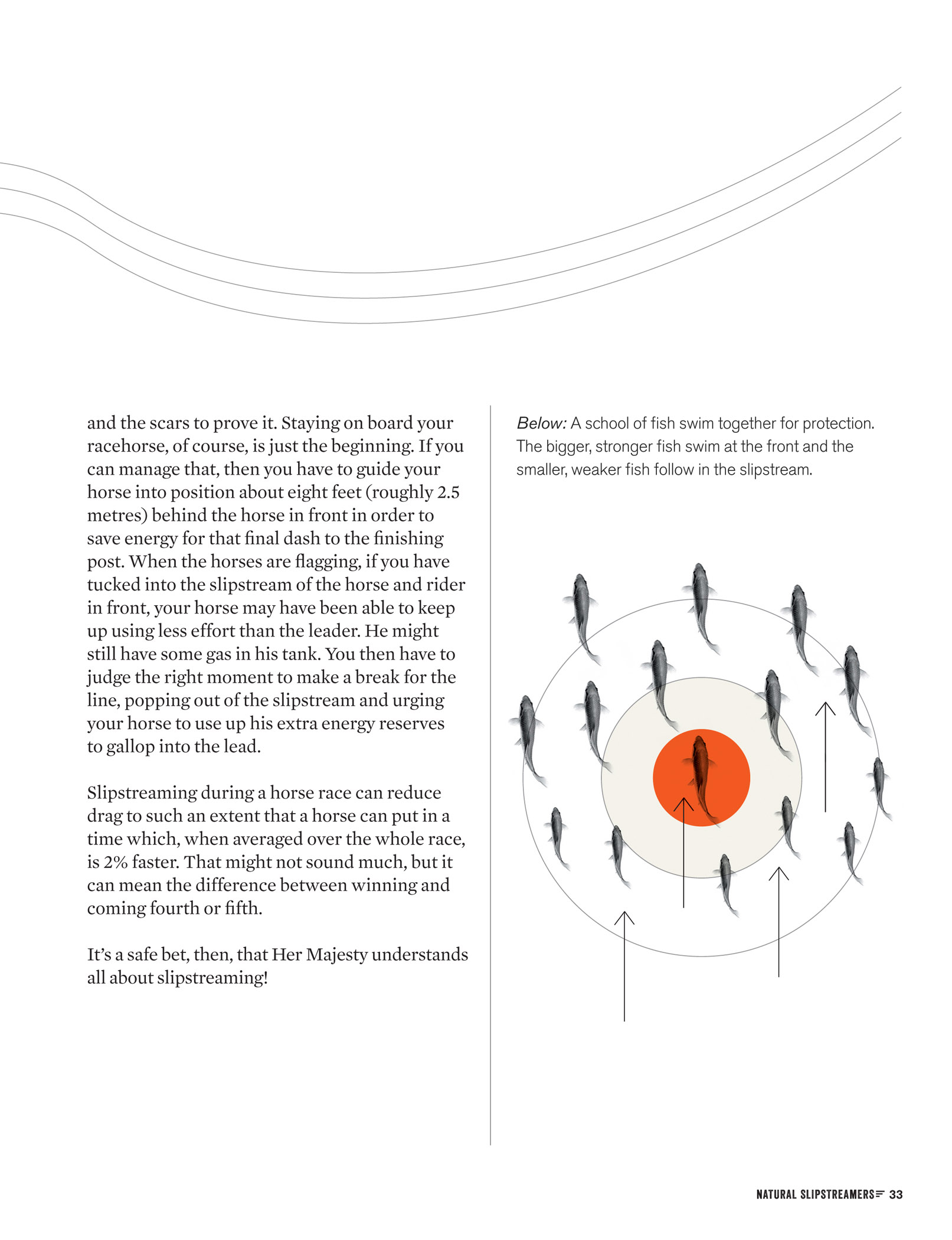
and the scars to prove it. Staying on board your
racehorse, of course, is just the beginning. If you
can manage that, then you have to guide your
horse into position about eight feet (roughly 2.5
metres) behind the horse in front in order to
save energy for that final dash to the finishing
post. When the horses are flagging, if you have
tucked into the slipstream of the horse and rider
in front, your horse may have been able to keep
up using less effort than the leader. He might
still have some gas in his tank. You then have to
judge the right moment to make a break for the
line, popping out of the slipstream and urging
your horse to use up his extra energy reserves
to gallop into the lead.
Below: A school of fish swim together for protection.
The bigger, stronger fish swim at the front and the
smaller, weaker fish follow in the slipstream.
The bigger, stronger fish swim at the front and the
smaller, weaker fish follow in the slipstream.
Slipstreaming during a horse race can reduce
drag to such an extent that a horse can put in a
time which, when averaged over the whole race,
is 2% faster. That might not sound much, but it
can mean the difference between winning and
coming fourth or fifth.
It’s a safe bet, then, that Her Majesty understands
all about slipstreaming!
NATURAL SLIPSTREAMERS 33